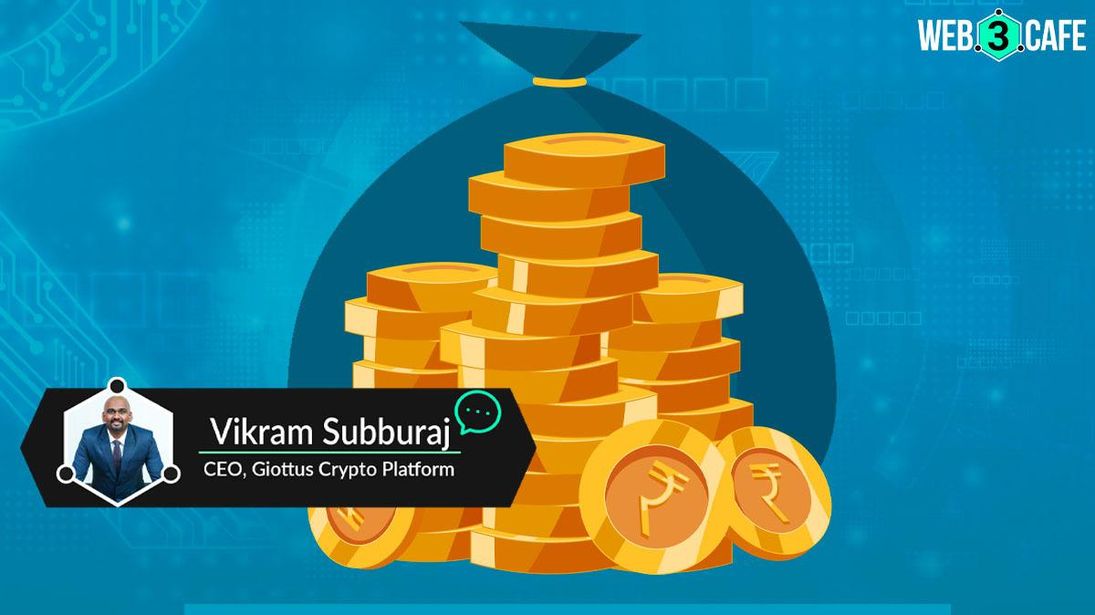Stablecoins: How will they transform India's digital economic landscape |OPINION|
An opinion piece by Giottus crypto platform's Vikram Subburaj on exploring the significance of stablecoins in India's growing digital economy and its role in the country's burgeoning DeFi ecosystem.
 opinion
opinion
India’s digital economy is rapidly evolving, and with it, the adoption of crypto assets is gaining momentum. Among the various types of crypto assets, stablecoins have potential to emerge as a game-changer in the digital financial landscape. Stablecoins, by definition, are designed to maintain price stability, making them an attractive option for businesses, investors, and consumers alike.
In this article, we explore the role stablecoins can play in India’s digital economy and their potential to revolutionise the financial sector.
Price stability and reduced volatility
One of the key advantages of stablecoins is their price stability. Unlike traditional crypto assets like Bitcoin and Ethereum, stablecoins are pegged to fiat currencies or commodities. This pegging mechanism ensures that the value of stablecoins remains relatively stable.
For businesses operating in India’s digital economy, stablecoins offer an efficient and secure means of conducting transactions. As more businesses adopt digital payment methods, stablecoins can provide a seamless payment solution that reduces transaction costs and processing times.
Cross-border payments and remittances
India is a key hub for remittances from expatriates and global trade. Traditional remittance channels often involve high fees and lengthy processing times. Stablecoins present a more efficient alternative, enabling near-instant, cross-border payments at significantly lower costs.
As India explores the possibility of introducing a central bank digital currency (CBDC), stablecoins could play a complementary role. A digital rupee, if launched, would have the backing and trust of the central bank, and stablecoins could provide additional options for digital payments, investments, and financial services.
Banking and DeFi opportunities
Stablecoins can play a critical role in promoting financial inclusion. In a country where a significant portion of the population remains unbanked or underbanked, stablecoins offer an accessible and user-friendly alternative to traditional banking services. With just a smartphone and internet connection, individuals can access stablecoins, conduct transactions, and participate in the digital economy without the need for a traditional bank account.
Stablecoins are also a critical component of the burgeoning DeFi ecosystem.DeFi platforms, right now, offer services such as lending, borrowing, and yield farming. Here, stablecoins act as a bridge between traditional finance and DeFi by providing a stable value that users can rely on while accessing these decentralized financial services. The growth of DeFi in India can democratize financial access and empower individuals with greater control over their finances.
Stablecoins can be a short-term store of value
Financial markets are subject to periodic volatility, influenced by global and domestic factors. Investors often seek shelter in stable assets during turbulent times. Stablecoins offer a refuge from market fluctuations, allowing investors to park their funds in a stable value while they do a ‘wait-and-watch’ of the markets. This shielding effect can be particularly valuable during economic uncertainties, providing individuals and businesses with a safer option to keep their capital.
Challenges and way forward
However, despite the benefits of stablecoins, there are also challenges and risks that we must overcome. Issuers of stablecoins have been under scrutiny globally on how they have backed the digital asset with traditional vehicles. There isn’t a consistent approach yet to stablecoins - its creation, distribution and consumer protection - globally.
Regulatory clarity and oversight are essential to protect consumer interests and prevent illicit activities. As the Government of India deliberates on its approach to crypto and digital assets as part of G20, a well-balanced regulatory framework that fosters innovation is crucial.
Many nations are considering stablecoins as a competitor to their own CBDCs while, in fact, they can play a complimentary role that brings in trust.
As India embraces the digital revolution, it will be essential for policymakers, businesses, and investors to collaborate in shaping a regulatory environment that nurtures responsible innovation and maximises the benefits of stablecoins for all stakeholders in the digital economy.
(The views expressed above are the author's own)


COMMENTS 0